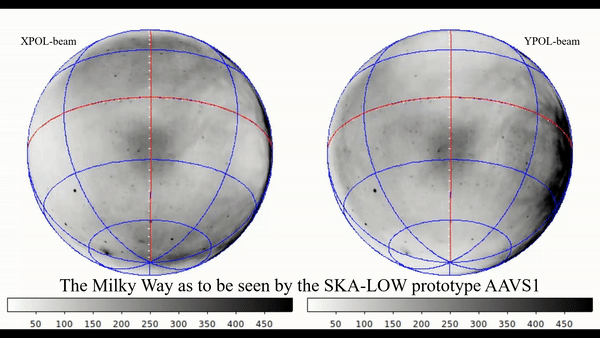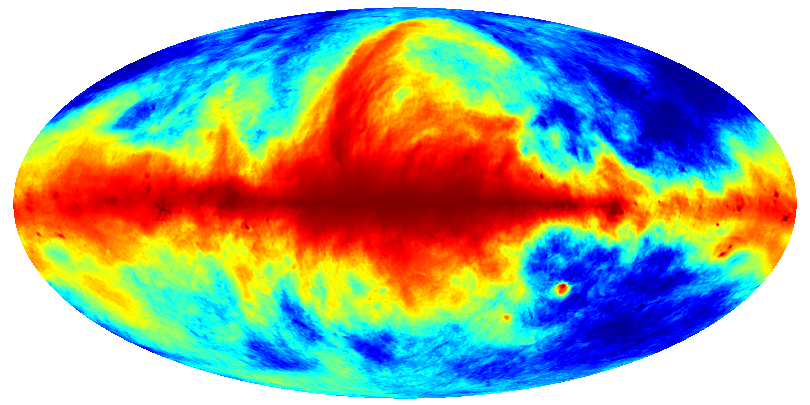February 2019’s “Monthly Media” is from PhD student Mike Kriele and is a simulation of how the Square Kilometer Array‘s (SKA) prototype the Aperture Array Verification System 1 (AAVS1) is expected to observe the Milky Way as it passes overhead.

Two antenna polarisations of how AAVS1 is expected to observe the sky. Depending on the polarisation of the antenna, there will be higher intensity in different parts of the image. Left: XPOL-beam polarisation. If you look closely you can see there is more detail towards the top and bottom of the observation. Right: YPOL-beam polarisation. Similarly, there is more detail at the sides of the observation.
The 1440 images that compose the GIF are a combination of decades old well-established observations of the Milky Way (the revered Haslam Map) simulated through the field of view of how the AAVS1 sees the sky.
Mike has taken the Haslam map and remapped it to show only what will be visible above the Murchison Radio Observatory where the SKA core and AAVS1 are located, removing the section of the sky blocked by the Earth from the Southern Hemisphere.

The Haslam Map. This all-sky image was published in 1982, and was generated by taking many small images of the sky and stitching them together (mosaicing), using a combination of single-dish and interferometric telescopes to image different sized features.
Each telescope has a unique ‘window’ through which it views the Universe, known as the beam pattern. Mike has taken the expected beam pattern of the AAVS1 antenna and mapped two polarisations of the telescope as the Milky Way Galaxy passes overhead.
As the observation progresses, the two polarisations of the beams affect the observed intensity in different parts of the images, and you can see features appear and disappear as the telescope’s angle on the sky changes.
Mike will use these simulations to test a new method (known as spherical harmonic decomposition) with the SKA prototype in the Southern Hemisphere. This method will allow for the observation of a broad set of scale sizes within one observation, instead of requiring a combination of different single-dishes and interferometers.
Leave A Comment